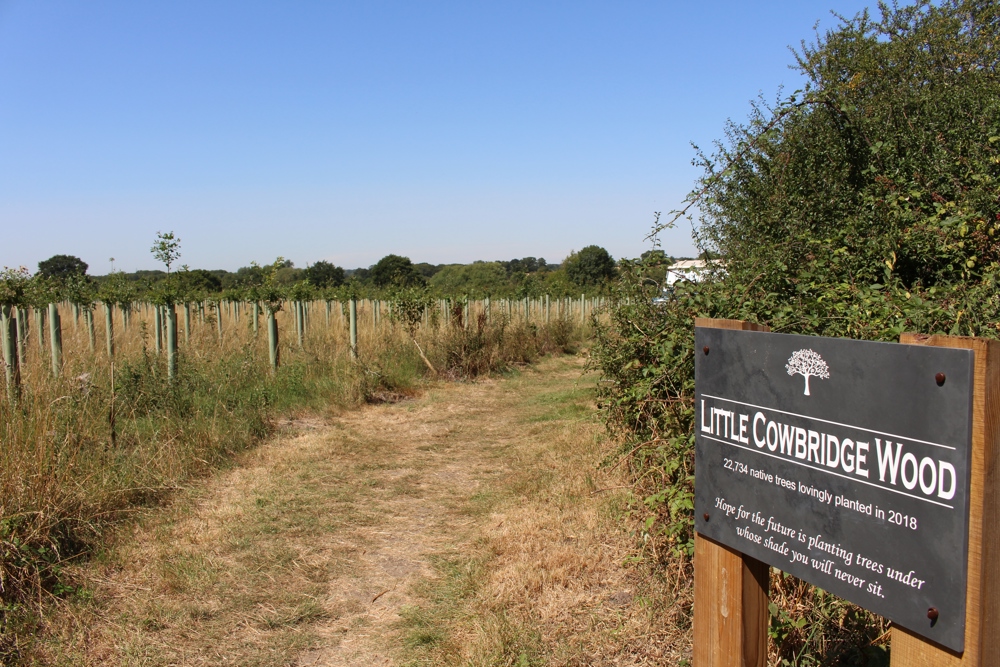Seeing the wood for the trees: The importance of forests

The 21st March is International Day of Forests, set up by the United Nations “to celebrate and raise awareness of the importance of all types of forests.” To celebrate the day and support the UN's mission, we explore the definition of a forest, examine why people should care, and how they affect people. All with the ambition of helping people to ‘see the wood for the trees’.

Forests, Woods, and Jungles – When is a forest, a forest?
Originally in the UK, a forest was considered anywhere with trees and wild game. However, a more modern, and equally ambiguous definition, considers forests as “A large area of land covered with trees and plants”.
- When is it large? There isn’t a global agreement, but Americans say it needs to be 1.24 acres.
- How covered should it be? Again, there is no global agreement, but in the spirit of 'international' day of forests, Australians define this with 30% of the land they occupy covered by the canopy, and this only counts if the trees are 5 meters or taller.
- Is it any type of tree? There are thought to be over 60,000 species of tree and they can all form forests. Some forests are known to have up to 100 different species in just 1 square kilometer.

With all this in mind, it does mean that Mangrove Forests skirt the edge of this definition (pun intended), and that underwater Kelp Forests are their own entirely different category of ecosystem.
Why should we care?
The short answer is trees give life. They make the clouds, the rain, and the air we breathe. But they also support people in modern society as they provide food, work, warmth, and shelter.
- Globally, forests provide 86 million green jobs, and around the world, 90% of those in extreme poverty depend on forests for food, shelter, and firewood.
But in an increasingly digital world, they provide important support for communities and individuals' mental health. From ‘playing with Conkers’, or climbing trees as children’, to hiking trails as adults – there is a link between green spaces, health, and happiness.
Anecdotally this can be seen by gardeners who have planted fruit trees and receive the joys of the first crop, sometimes decades after the initial seed was planted, or from the multiple generations of people interacting with the same tree, from playing and climbing, to sheltering under it during blistering sun or pouring rain.
On a less whimsical note, economically the global value of forests is difficult to comprehend. They are a £1.5 billion industry in the UK alone, with an additional import of up to £8.5 billion in wood products. With uses across all industries and sectors.
Why does it affect you?
Looking back at the £1.5 billion UK wood industry, it is important to question and understand where all that wood comes from.
- The UK has ~8 million acres of forest that it uses for a multitude of industries, from manufacturing to leisure.
- But, 3 times that amount is LOST around the globe Every. Single. Year.
This unsustainable practice is done to make way for cattle farming to feed the increasing global appetite for meat, as a cheap source of wood for fuel, or for the creation of both low-cost and high-end exotic furniture.
Aside from the obvious loss of carbon stores, this global reduction in forests means that we are removing health opportunities and natural barriers to pollution.
Just a single visit per week to a forested area can lower the stress hormone Cortisol. Lowering cortisol improves mood, attention span, and productivity, and can improve the outcomes of medical treatments. That means with over half of the population of the UK living within six miles of a woodland or forest, they are accessible ways to recover, exercise, and practice mindfulness, right on the doorstep.

Evidence from peer-reviewed papers also suggests that those with breathing difficulties will benefit from the natural barriers forest provide from pollution and that traditional therapies such as “forest bathing” (a quick stroll in the woods to breathe in phytoncides - chemicals trees use to fight disease) may have merit when it comes to improving long term lung health.
Forests are more than just trees
Just as the original term mentioned “wild game”, forests can’t just be thought of as trees alone. After all, forests cover 30% of the surface of the land and have a rich biodiversity, so it isn’t surprising that they include 50% of all of the Earth’s animal species.
And let’s not stop at animals.
Forests wouldn’t exist without an extensive underground network of fungi (sometimes as large as a thousand acres) that help to break down dead matter, recycle it back into the ground, and even share nutrients between individual trees.
The Next Steps
At Ground Control, our vision is to leave the world in a better place than we found it. We believe in protecting and enhancing forests, whilst supporting educational opportunities to learn more and more about them.
At the Wildfell Center for Environmental Recovery, we are undertaking the biggest landscape-scale nature-recovery project in our history. to increase the opportunity for Humans and Nature to thrive.
To date, we have planted 22ha of a 50ha Woodland Creation Scheme, which aims to be completed by 2024 with 97,000 native trees and shrubs in total.
And at Pinner Park Primary School our experts and volunteers facilitated the planting of hedgerows, a micro-forest, fruit trees, and, a wildflower meadow with over 800 pupils. We aimed to raise awareness of biodiversity for the next generation.
Click here to read all about the International Day of Forests, set up by the United Nations in 2012 to celebrate and raise awareness of the importance of all types of forests.

Ground Control wins BALI award for Community and Schools Development

The restoration of Wetlands





